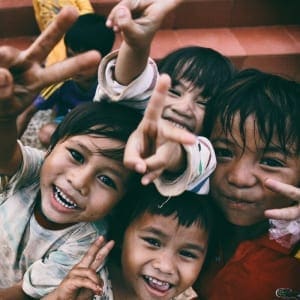During the COVID-19 pandemic, tourism scholars and practitioners have directed their attention to local communities in tourist destinations, examining their safety and well-being and the costs that they bear due to tourism activities. Yet according to the SHTM’s Professor Haiyan Song and Dr Jinah Park and their co-researchers, it is now time to discuss the social costs of tourism during crises. How much are local communities willing to sacrifice to reduce these costs? Analysing local residents’ willingness to pay to alleviate public health risks, the researchers explored the situation through an economic lens. Their findings have important implications for the formulation of recovery strategies and policies in destinations affected by COVID-19.

“Tourism has a profound impact on society”, note the researchers, “and alongside its positive effects it can interfere with the social and economic well-being of residents in tourist destinations”. Most concerningly, the rapid increase in tourism and mobility due to globalisation has led to the emergence (or re-emergence) of infectious diseases. Urbanisation and globalisation drive the rapid spread of the virus, but tourism clearly plays a role in exacerbating the resulting public health crises. The 2003 SARS epidemic prompted many researchers to study the impacts of and responses to infectious respiratory diseases such as swine flu and Ebola. They found that the spread of disease via human travel poses the main risk to tourism, as it leads to restrictions on international movement.
“In addition to the health risks to tourists”, the researchers note, “there are obvious concerns that infected tourists may spread the disease to local residents”. Yet, little attention has been paid to how tourism can amplify public health crises for residents and stakeholders at tourist destinations. Given the threat posed by the COVID-19 pandemic, it is more important than ever to study the risk perceptions of residents of tourism destinations, whose views are shaped by experiences that tourists do not share.
At the peak of the COVID-19 crisis in China, the researchers surveyed 1,627 residents in three urban tourism destinations (Hong Kong, Guangzhou and Wuhan). Responding to hypothetical scenarios, each respondent was asked to indicate their willingness to pay (WTP) to reduce three types of risk associated with tourism during the pandemic: health risk (i.e., risk of cross-infection, shortage of medical supplies, the difficulty of prevention and patient tracing), social risk (i.e., social panic and instability, commodity shortage, and environmental degradation), and three elements of the negative effects on tourism (i.e., reputational crisis in tourism, host-guest conflicts and xenophobia).
Most of the respondents in these three cities were willing to pay to reduce the risk posed by tourism during the COVID-19 public health crisis. Indeed, “the residents of the three cities were willing to pay an average of 300 in local currency (Hong Kong dollars or Chinese RMB) to reduce the risk of negative tourism-generated pandemic effects”, write the researchers. They stressed that although the intensity of the pandemic differed between the three cities, “no significant differences were observed in the basic WTP of residents between the cities”. This, they reasoned, was attributable to the extensive media coverage of COVID-19, which meant that all residents were aware of the pandemic’s severity, even when their cities had relatively few confirmed cases.
The researchers also found that younger residents were willing to pay more for risk reduction. “Younger generations are more digitally savvy and more often connected to the Internet than older residents”, the researchers explain, “which allows younger generations to access the most up-to-date information about the pandemic crisis in real time”. This implies that local authorities and tourism organisations should seek to involve young people in crisis recovery actions in the aftermath of the pandemic.
The researchers found that the estimated social costs of tourism during the pandemic ranged from 917 million HKD (in Hong Kong) to 1,417 million RMB (in Guangzhou). The total social costs for Hong Kong, Guangzhou and Wuhan were similar. “As the pandemic has spread worldwide”, write the researchers, “the social cost to local populations has been generalised”. This suggests that tourism destinations can and should follow a broad global framework in responding to the crisis.
At times of crisis or disaster, stakeholders in a tourist destination become ever more tightly connected. The researchers suggest that during the COVID-19 crisis, “residents perceive their individual WTP and the costs borne by the community . . . as inseparably linked, which makes them more willing to individually pay more to maintain public health”.
This ground-breaking study provides useful suggestions for recovery and stimulus measures during and after the COVID-19 pandemic. Although China’s tourism industry is gradually regaining momentum in some leisure destinations at weekends, this is not the case in major cities. “To satisfy people’s need for safety and their desire for travel”, the researchers suggest, “recovery strategies should be formulated with a holistic and innovative mindset instead of focusing narrowly and directly on tourism recovery”. Welfare policies and relief packages should be designed to allocate financial support across all sectors, including tourism and health, to ensure the balanced recovery of cities and regions.
About PolyU’s School of Hotel and Tourism Management
For over 40 years, PolyU’s School of Hotel and Tourism Management has refined a distinctive vision of hospitality and tourism education and become a world-leading hotel and tourism school. Rated No. 1 in the world in the “Hospitality and Tourism Management” category according to ShanghaiRanking’s Global Ranking of Academic Subjects 2020, placed No. 1 globally in the “Commerce, Management, Tourism and Services” category in the University Ranking by Academic Performance in 2019/2020 and ranked No. 1 in the world in the “Hospitality, Leisure, Sport & Tourism” subject area by the CWUR Rankings by Subject 2017, the SHTM is a symbol of excellence in the field, exemplifying its motto of Leading Hospitality and Tourism.
The School is driven by the need to serve its industry and academic communities through the advancement of education and dissemination of knowledge. With more than 70 academic staff drawing from 21 countries and regions, the SHTM offers programmes at levels ranging from undergraduate degrees to doctoral degrees. Through Hotel ICON, the School’s groundbreaking teaching and research hotel and a vital aspect of its paradigm-shifting approach to hospitality and tourism education, the SHTM is advancing teaching, learning and research, inspiring a new generation of passionate, pioneering professionals to take their positions as leaders in the hospitality and tourism industry.














